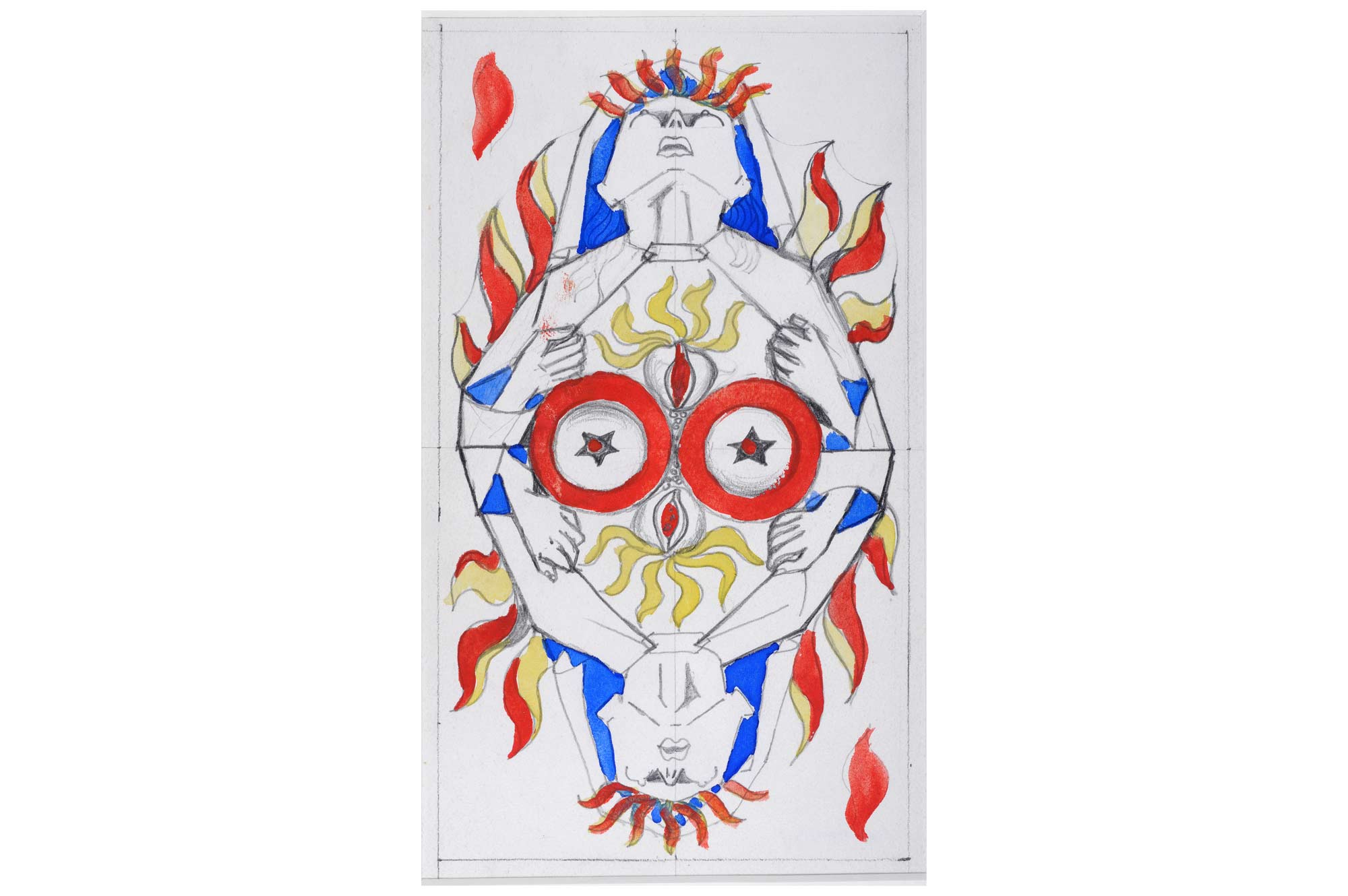André Masson’s (1896-1987, FR) oeuvre is marked by his dramatic experience of war (he was seriously wounded at the Chemin des Dames in 1914) as well as his passionate and tempestuous relationship with the Surrealist group: he joined the group in 1924 but was expelled four years later, before becoming a member again from 1936 to 1945. In 1923 he rented a studio with Miró in rue Blomet that was frequented by Hemingway, Artaud, Robert Desnos, Gertrude Stein, Michel Leiris and Max Jacob. After signing a contract with Daniel-Henry Kahnweiler in 1922, he was able to devote himself entirely to art.
His automatic drawings from 1924 to 1925 were followed by his ‘sand paintings’ from 1926 to 1927, in which the artist reached a certain level of abstraction. After contributing to the magazine Minotaure (1933) and creating Acéphale with Georges Bataille (1936), he participated in the exhibition Fantastic Art, Dada, Surrealism at the MOMA in New York in 1936. During his second Surrealist period, Masson read Heraclitus, Nietzsche and Goethe, created a series of portraits of the German Romantics. While seeking refuge in Marseille between November 1940 and March 1941, he took part in the various group activities organised by Breton, including the famous Jeu de Marseille. He left France on the 31st of March 1941 and stayed in Martinique for three weeks before arriving in New York on the 29th of May and settled in New Preston, near Alexander Calder. Apart from Breton, who was also in exile, Masson spent time with Gorky, Chagall and Georges Duthuit. His work and the lectures he gave at various universities had an immediate influence on young people.
Jeu de Marseille
Among the many works by the artists and writers gathered at Villa Air-Bel, the most outstanding is certainly the Jeu de Marseille – a nod to the famous ‘Tarots de Marseille’, which André Breton was studying at the time. The Surrealists reinvented the iconography of a classical deck of cards in terms of the movement’s favourite figures and symbols. The suits became became the flame of Love (represented by Baudelaire, Stendhal’s Portuguese nun, Novalis), the black star of the Dream (Lautréamont, Lewis Carroll’s Alice, Sigmund Freud), the bloody wheel of the Revolution (Marquis de Sade, Lamiel, Pancho Villa) and the lock of Knowledge (Hegel, Hélène Smith, Paracelsus). A random draw determined who would design the different cards: Victor Brauner (Hegel and Hélène Smith), André Breton (Paracelsus and the Ace of Knowledge), Jacques Hérold (Lamiel and Sade), André Masson (La Religieuse portugaise and Novalis), Max Ernst (Pancho Villa and the Ace of Love), Jacqueline Lamba (Ace of Revolution and Baudelaire), Wifredo Lam (Alice and Lautréamont) and Oscar Dominguez (Freud and the Ace of Dream). The joker was based on Alfred Jarry’s drawing of Father Ubu, while Frédéric Delanglade designed the backs of the cards. Frédéric Delanglade was then tasked with standardising the sketches by redrawing them in a continuous line. In 1943, they were published for the first time in New York in the third issue of Revue WW and then edited in 1983 by André Dimanche.









 The Refuge, Musée Cantini. André Masson, La Religieuse portugaise. Sirène d'amour - Flamme. 1941. Collection Musée Cantini, Marseille
The Refuge, Musée Cantini. André Masson, La Religieuse portugaise. Sirène d'amour - Flamme. 1941. Collection Musée Cantini, Marseille